Table of Content
- What is Acoustic Emission Testing?
- The History of Acoustic Emission Testing
- The Theory behind Acoustic Emission Sources
- The Theory behind Acoustic Waves
- Acoustic Emission Testing vs. Ultrasonic Testing
- Advantages of Acoustic Emission Testing
- Disadvantages of Acoustic Emission Testing
- Applications of Acoustic Emission Testing
- Acoustic Emission Testing Standards And Industry Codes
- Key Takeaways
- FAQs
In the era of NDT, where technology meets precision, one method that stands out as an advancement is Acoustic Emission Testing (AET). 'Ping' testing has been used for ceramics, and humans have been using sound for generations to check for flaws and ensure quality.
Due to bending stresses, indium was unintentionally found to make a squeaking sound in the 1860s. Like tin, zinc, niobium, and gallium, this sound denotes deformation in low-symmetric metals, resulting in "twinning" and producing characteristic sounds. AET has completely changed the way we inspect and maintain structures, Pipelines, and industrial equipment.
What is Acoustic Emission Testing?
Acoustic emission (AE) is a non-destructive testing technique used to detect and monitor the release of ultrasonic stress waves from localised material when it undergoes deformation or damage. This technique involves placing sensors on the surface of a material or structure and monitoring the acoustic signals emitted during mechanical loading or stress conditions. These signals can indicate the presence, location, and severity of defects such as cracks, fractures, or other discontinuities within the material. Acoustic emission testing is commonly used in industries such as aerospace, automotive, construction, and manufacturing to assess the structural integrity of components and ensure safety and reliability.
An inspection method that uses the release of ultrasonic stress waves to identify defects in materials can pinpoint early-stage damage that traditional methods may miss. In this comprehensive guide, we will delve into the depths of Acoustic Emission Testing, shedding light on its principles, applications, and why it has become an indispensable tool in various industries.
The History of Acoustic Emission Testing
The acoustic emission NDT Method has revolutionized the assessment of structural integrity and potential faults in materials and components. It originated in the mid-20th century when researchers explored the correlation between material stress and emitted acoustic waves. AET's early applications were seen in the Aerospace Industry, where it was needed for reliable Structural Health Monitoring. The methodology extends to various materials, making it versatile and widely applicable across industries.
Acoustic Emission (AE) refers to the generation of transient elastic waves produced by a sudden redistribution of stress in a material. These waves are emitted when a material experiences changes in its structure, such as cracks or deformation under stress. This has allowed for real-time detection of damage without affecting the material's integrity.
Where do Acoustic Emissions Come From?
Acoustic Emissions happen when materials undergo changes like bending, breaking, or cracking. For example, when a metal part is stressed or a concrete structure is loaded, tiny cracks or fractures can form, releasing energy in the form of acoustic waves. These waves travel through the material and can be detected by sensors placed on its surface. By monitoring these emissions, we can identify potential defects or weaknesses in the material, helping to prevent failures or accidents.
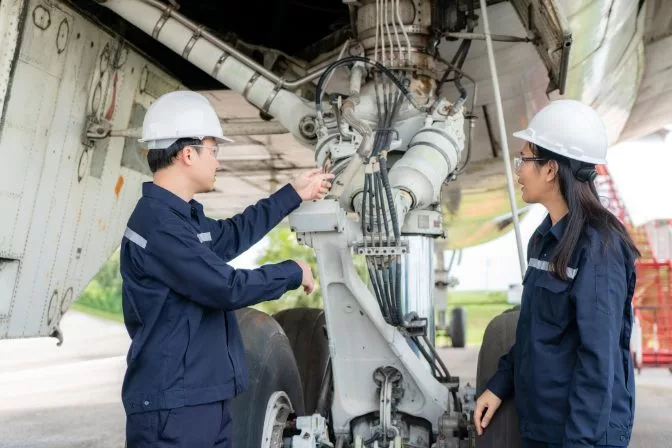
Following are some common sources of acoustic emissions:
1. Material Fracture
When a material undergoes fracture or failure, such as in metals, composites, or ceramics, the release of stress can produce Acoustic Emissions. This is particularly useful for detecting and monitoring the progression of cracks or other defects within a material.
2. Structural Fatigue
The cyclic loading and unloading of a structure can produce Acoustic Emissions, which show the emergence of fatigue cracks. This is crucial for assessing the durability of structures like bridges, Pipelines, and aircraft components.
3. Corrosion and Erosion
The degradation of materials due to Corrosion or erosion can also produce acoustic emissions. Monitoring these emissions helps in the early detection of material deterioration and potential structural problems.
4. Fretting and Wear
When two surfaces undergo repeated small-scale movements or vibrations, such as in fretting or wear processes, the resulting stress waves can generate Acoustic Emissions. Monitoring these emissions can provide insights into the condition of sliding interfaces.
5. Impacts and Collisions
Sudden impacts or collisions can generate acoustic emission testing in NDT. This is relevant in situations where structures may experience unexpected forces, such as in industrial equipment or during transportation.
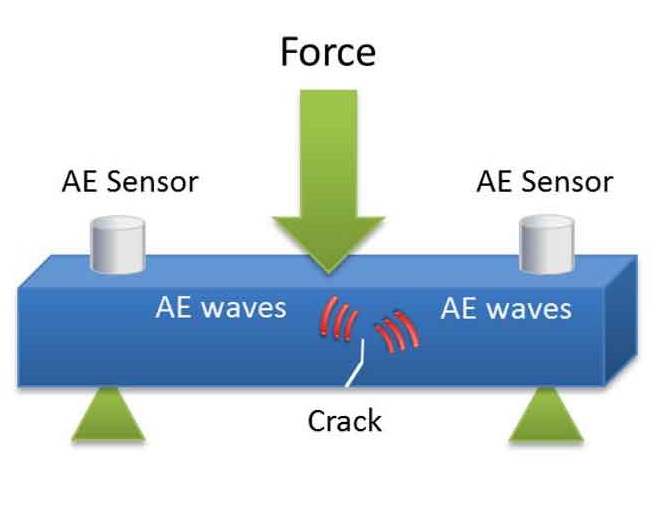
Theory behind Acoustic Emission Sources
AET is the detection and analysis of high-frequency sound waves that are generated by materials and structures under stress or undergoing changes. These sources can range from microcracks and dislocations to the propagation of macroscopic cracks within a material. Differentiating between these sources is essential for accurately assessing the condition of a structure.
1. Mechanics of Acoustic Emission
The mechanics of acoustic emissions NDT revolve around the response of materials to external forces. Stress and strain play a significant role in influencing the type and intensity of AE events. By comprehending these mechanics, engineers can gain valuable insights into the structural behavior of materials.
2. Detection and Measurement Techniques
Detecting and measuring using Acoustic Emission Testing requires sophisticated techniques. Acoustic Emission (AE) testing is a powerful method for inspecting and monitoring the behavior of equipment and materials performing under stress. From Piezoelectric Sensors to advanced signal processing algorithms, the arsenal of tools available ensures precise and reliable data. The process involves using sensors to detect AE and then converting the waves into electrical signals so that they can be recorded.
Theory Behind Acoustic Waves
Acoustic waves, a fundamental aspect of physics, play a crucial role in various applications across different industries. Acoustic waves are disturbances that travel through a medium, typically air or water. Understanding the fundamental concepts of wave propagation is essential to grasping the intricacies of acoustic wave behavior. However, acoustic waves also have challenges to overcome, such as comparing them with electromagnetic and seismic waves, which can reveal their unique advantages. Understanding these differences helps choose the most suitable wave type for specific tasks.
Future prospects for acoustic wave technology include enhanced imaging techniques, more efficient communication systems, and novel applications in emerging technologies. Sustainability is a growing concern in technology, and acoustic waves can be used in environmentally friendly ways to minimize their ecological footprint. They are also finding synergies with emerging technologies like IoT and Artificial Intelligence, providing insight into the interconnected future of technological advancements.
Acoustic waves are generated through the vibration of particles in a medium by the Best NDT Professionals. Whether it's the strumming of a guitar string or the shockwaves from an explosion, various factors influence the generation of acoustic waves. Behind this phenomenon are diverse sources using the Acoustic Emission Testing Principle.
Acoustic waves, with their speed, wavelength, frequency, and amplitude, play a crucial role in various industries, including medical diagnostics and industrial testing. There are advantages of acoustic emission testing in communication systems, particularly underwater material testing, for identifying defects and weaknesses without harming the materials being tested. Recent developments in acoustic wave technology have opened new possibilities in acoustic testing procedures.
Advantages of Acoustic Emission Testing
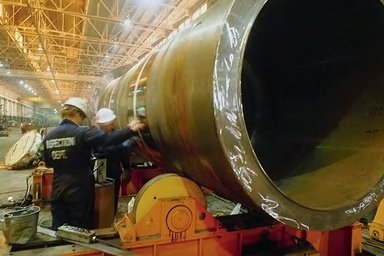
Acoustic Emission Testing has gained significant prominence as an NDT Technique that provides valuable insights into the structural health of materials and components. This method stands out due to its unique advantages, making it a preferred choice across various industries.
1. Early Detection of Defects
One of the most significant advantages of Acoustic Emission Testing is its ability to detect defects at an early stage. As materials undergo stress, deformation, or changes in their structural integrity, they emit high-frequency sound waves that are beyond the range of human hearing. By capturing these emissions, AET can identify even the slightest anomalies, allowing engineers to take proactive measures before defects escalate into critical issues.
2. Non-Invasive Testing
Traditional NDT Methods often require samples to be extracted or structures to be dismantled, causing disruptions and potential damage. AET, however, is a non-invasive technique that doesn't require physical contact with the material. This means that inspections can be carried out without causing harm to the tested object, ensuring its continued usability and integrity.
3. Continuous Monitoring
Unlike some testing methods that offer one-time snapshots, Acoustic Emission Testing allows for continuous monitoring of materials and structures. This is particularly beneficial for applications like structural health monitoring, where changes in material behavior over time can provide crucial insights into the overall health of the system. Continuous monitoring helps in identifying trends, understanding degradation patterns, and predicting potential failures.
4. Real-time Analysis
Acoustic Emission Testing provides real-time analysis, enabling immediate responses to emerging issues. As acoustic emissions are detected and analyzed in real-time, engineers and NDT Technicians can swiftly make informed decisions. This is especially valuable in industries where downtime is costly, and quick assessments are essential for maintaining operational efficiency.
5. Cost-Efficiency
The non-invasive nature of AET contributes to cost efficiency. Since there's no need to dismantle structures or perform extensive preparation, the overall testing process is streamlined. Additionally, the early defect detection and continuous monitoring aspects of AET help prevent costly downtime and unplanned maintenance, further enhancing cost savings.
6. Wide Range of Applications
Acoustic emission testing finds applications across a diverse range of industries, from Aerospace Industry and automotive to manufacturing and energy. Its versatility stems from its ability to assess the structural integrity of various materials, making it an invaluable tool for ensuring safety, quality, and reliability.
7. Environmentally Friendly
AET is an environmentally friendly Method. Since it doesn't require the use of harmful chemicals or materials and doesn't generate waste, it aligns well with sustainable practices. This aspect makes AET a responsible choice for industries striving to minimize their ecological footprint.
Disadvantages of Acoustic Emission Testing
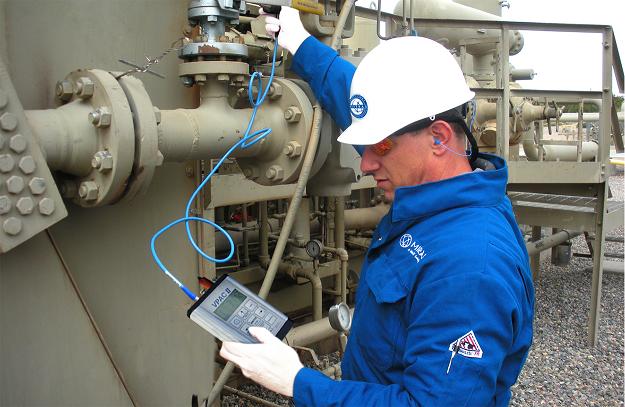
While AET offers numerous benefits for assessing structural integrity, like any testing method, it also comes with its own set of disadvantages that need to be considered. Here are the disadvantages of Acoustic Emission Testing:
1. Limited Detection Range
AET is effective for detecting defects and anomalies within a certain distance from the sensors. However, its detection range is limited, especially for larger structures or components. This means that defects occurring outside the range of the sensors might go unnoticed, potentially leading to incomplete assessments.
2. Interpretation Complexity
The analysis of acoustic emissions requires sophisticated software and expertise. The interpretation of the signals can be complex, and false positives or false negatives can occur if the analysis is not performed accurately. This highlights the need for trained professionals to ensure reliable results.
3. Environmental Interference
External environmental factors, such as ambient noise, temperature fluctuations, and vibrations, can interfere with the accurate detection of acoustic emissions. Filtering out these external interferences while capturing relevant signals can be challenging and might impact the precision of the testing.
4. Source Identification
While it can pinpoint the location of emissions, it might not always accurately identify the source of the emissions. This can make it difficult to determine the exact nature of the defect or anomaly, requiring additional testing or inspection methods for confirmation.
5. Material Dependency
The effectiveness of AET can vary depending on the type of material being tested. Some materials might not emit detectable acoustic emissions under certain conditions, making the technique less reliable for assessing those materials.
6. Lack of Quantitative Data
Acoustic Emission testing provides qualitative data about the presence of defects or anomalies, but it might not always provide precise quantitative data regarding the severity or extent of the issues. This can make it challenging to make informed decisions about necessary repairs or replacements.
7. Sensitivity to Test Conditions
Temperature, humidity, and stress levels are just a few test conditions that can have an impact on the accuracy of AET results. Any variations in these conditions can affect the emitted signals, potentially leading to inconsistent results.
Applications of Acoustic Emission Testing
Acoustic Emission Testing has emerged as a versatile NDT Technique that finds applications in a diverse range of industries. From alternative power to manufacturing, this method offers valuable insights into the structural integrity of materials and components. Here are a few applications of AET, or Acoustic Emission Testing.
1. Alternative Power Industries
Industries involved in alternative power sources, such as wind and solar energy, rely on AET to monitor the structural health of components like turbine blades and Solar Panels. Detecting early signs of damage or fatigue, helps ensure the efficient and safe operation of these critical components, contributing to the overall reliability of alternative energy systems.
2. Automobile Industry
In the fast-paced Automobile Industry, where safety is paramount, it is employed to assess the structural integrity of vehicle components. From chassis and engine blocks to suspension systems, AET aids manufacturers in maintaining high-quality standards and ensuring the safety of vehicles on the road.
3. Petrochemical Industry
The petrochemical industry deals with high Pressure Vessels and pipelines that are subjected to extreme conditions. It is used to monitor these structures for any signs of stress, corrosion, or defects. By detecting potential weaknesses early on, AET assists in preventing leaks and ensuring the safety of workers and the environment.
4. Construction Industry
In the construction sector, where the stability of structures is paramount, AET plays a crucial role. It aids in the continuous monitoring of bridges, buildings, and other infrastructure for any signs of structural deterioration. This real-time assessment helps engineers take proactive measures to address issues before they escalate.
5. Manufacturing
The manufacturing industry benefits from AET in various ways. Whether it's inspecting welds, assessing the integrity of Pressure Vessels, or detecting defects in fabricated components, AET contributes to maintaining product quality and minimizing the risk of failure.
6. Transport Industry
In the transport sector, including railways and aviation, safety is of the utmost importance. Acoustic Emission Testing is used to examine critical components of trains, aircraft, and ships. By identifying defects that might compromise structural integrity, AET enhances the overall safety and reliability of transport systems.
7. Material Testing
Material testing laboratories use AET to study the behavior of materials under controlled conditions. Researchers can gain valuable insights into material properties, behavior under stress, and the effects of various factors. This information is crucial for developing new materials and enhancing their applications.
Acoustic Emission Testing vs. Ultrasonic Testing
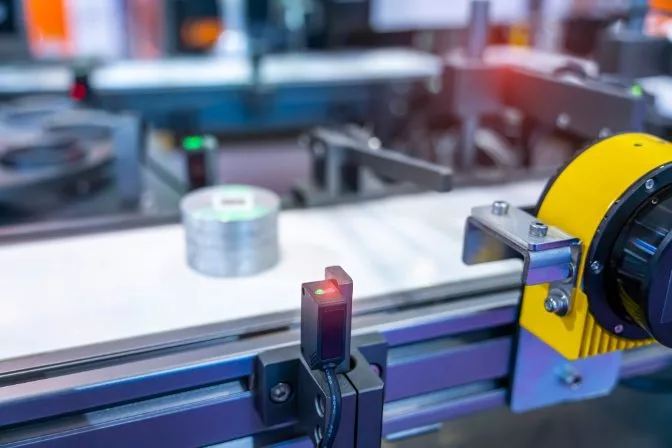
With material inspection, the methodologies of acoustic emission testing and Ultrasonic Testing stand out as pioneers, each with its own unique set of attributes. Acoustic emission testing involves the detection of transient stress waves released during material deformation. This NDE proves particularly adept at identifying active defects or flaws in real-time.
> Acoustic Emission Testing
AET highlights the Importance of NDT as it's used in various industries, including aerospace and manufacturing, to monitor structural changes in materials under stress. It provides real-time insights, enables swift decision-making, and offers cost-efficiency due to its non-destructive nature.
> Ultrasonic Testing (UT)
What is Ultrasonic testing? Ultrasonic Testing operates on the principle of sending high-frequency sound waves through a material, with reflections indicating potential defects. This method is particularly effective for volumetric inspections. UT finds widespread use in the Oil and Gas Industry, construction, and automotive sectors. Its precision in detecting internal defects positions it as a cornerstone in ensuring the reliability of critical structures. UT offers deep inspection capabilities, reaching challenging depths and detecting minute flaws, ensuring a meticulous process with its high sensitivity using Ultrasonic Transducers. AET is a popular choice for industries focusing on surface defects and continuous monitoring, such as Pressure Vessels or pipelines. It detects evolving flaws in real time, while UT is preferred for deep penetration and meticulous inspection of internal structures. The choice between AET and UT depends on the specific needs of the application.
Acoustic Emission Testing Standards And Industry Codes
Every NDT must follow numerous testing codes and approvals that may vary based on the environment, applications, and test subject. Some of these Industry codes are as follows:
American Society of Mechanical Engineers
- Section V, Sub. A, Article 11-Boiler and Pressure Vessel Code- Acoustic Emission Examination of Fibre Reinforced Plastic Vessels.
- Section V, Sub. A, Article 12-Boiler and Pressure Vessel Code- Acoustic Emission Examination of Metallic Vessels during pressure testing
- Section 11, Division 1, Code Case No. N-471- Boiler and Pressure Vessel Code: -Acoustic Emission for Successive Inspections.
- Section 11, Appendix- Boiler and Pressure Vessel Code-Acoustic Emission Monitoring of Nuclear Reactor Pressure Boundaries during Operation
- Standard Guide to Test Methods and Standards for Non-destructive Testing of Advanced Ceramics- RTP-1-1995
American Society for Testing and Materials
- Standard Guide to Test Methods and Standards for Non-destructive Testing of Advanced Ceramics- ASTM C 1175
- Standard Specification for Agencies Performing Non-destructive Testing- ASTM E 543
- Standard Practice for Acoustic Emission Monitoring of Structures During Controlled Stimulation- ASTM E 569
- Standard Guide for Mounting Piezoelectric Acoustic Emission Sensors- ASTM E 650
- Standard Practice for Acoustic Emission Monitoring During Continuous Welding- ASTM E 749
- Standard Practice for Characterizing Acoustic Emission Instrumentation- ASTM E 750
- Standard Practice for Acoustic Emission Monitoring During Resistance Spot-Welding- ASTM E 751
- Standard Guide for Determining the Reproducibility of Acoustic Emission Sensor Response- ASTM E 976
- Standard Guide for Evaluating Characteristics of Ultrasonic Search Units- ASTM E 1065
- Standard Practice for Acoustic Emission Examination of Fiberglass Reinforced Plastic Resin (FRP) Tanks/Vessels- ASTM E 1067
- Standard Test Method for Primary Calibration of Acoustic Emission Sensors- ASTM E 1106
- Standard Practice for Acoustic Emission Examination of Reinforced Thermosetting Resin Pipe (RTRP)- ASTM E 1118
- Standard Practice for Continuous Monitoring of Acoustic Emission from Metal Pressure Boundaries- ASTM E 1139
- Standard Practice for Leak Detection and Location Using Surface-Mounted Acoustic Emission Sensors- ASTM E 1211
- Standard Practice for Quality Management Systems for Non-destructive Testing Agencies- ASTM E 1212
- Standard Terminology for Non-destructive Evaluation Examination- ASTM E 1316
- Standard Guide for Evaluating Capabilities of Non-destructive Testing Agencies- ASTM E 1359
- Standard Practice for Examination of Seamless, Gas-Filled, Pressure Vessels Using Acoustic Emission- ASTM E 1419
- Standard Guide for Acousto-Ultrasonic Assessment of Composites, Laminates, and Bonded Joints- ASTM E 1495
- Standard Practice for Construction of a Stepped Block and Its Use to Estimate Errors Produced by Speed-of-Sound Measurement Systems for Use on Solids- ASTM E 1544
- Standard Practice for Acousto-Ultrasonic Assessment of Filament-Wound Pressure Vessels- ASTM E 1736
- Standard Practice for Secondary Calibration of Acoustic Emission Sensors- ASTM E 1781
- Standard Practice for Acoustic Emission Examination of Pressurized Containers Made of Fiberglass Reinforced Plastic with Balsa Wood Cores- ASTM E 1888 / E 1888 M
- Standard Practice for Examination of Liquid-Filled Atmospheric and Low-Pressure Metal Storage Tanks Using Acoustic Emission-ASTM E 1930
- Standard Guide for Acoustic Emission Examination of Small Parts- ASTM E 1932
- Standard Practice for Verifying the Consistency of AE Sensor Response Using an Acrylic Rod- ASTM E 2075 / E 2075M
- Standard Practice for Examination of Fiberglass Reinforced Plastic Fan Blades Using Acoustic Emission- ASTM E 2076 / E 2076 M
- Standard Practice Method for Examination of Gas-Filled Filament-Wound Composite Pressure Vessels Using Acoustic Emission- ASTM E 2191 / E 2191 M
- Standard Guide for Acoustic Emission System Performance Verification- ASTM E 2374
- Standard Practice for Determining Damage-Based Design Stress for Fiberglass Reinforced Plastic (FRP) Materials Using Acoustic Emission- ASTM E 2478
- Standard Guide for Non-destructive Testing of Polymer Matrix Composites Used in Aerospace Applications- ASTM E 2533
- Standard Practice for Acoustic Emission Examination of Cast Iron Yankee and Steam Heated Paper Dryers- ASTM E 2598
- Standard Practice for Acoustic Emission Examination of Plate-like and Flat Panel Composite Structures Used in Aerospace Applications- ASTM E 2661 / E 2661M
- Standard Practice for Acoustic Emission Examination of Welded Steel Sphere Pressure Vessels Using Thermal Pressurization- ASTM E 2863 / E 2863M
- Standard Practice for Examination of Paper Machine Rolls Using Acoustic Emission from Crack Face Rubbing- ASTM E 2907
- Standard Test Method for Acoustic Emission for Aerial Personnel Devices Without Supplemental Load Handling Attachments- ASTM F 914 / F 914 M
Japanese Standards Association
- Methods For Acoustic Emission Testing of Pressure Vessels During Pressure Tests and Classification of Test Results- JIS Z 2342:2003
- Methods for Absolute calibration of Acoustic Emission Transducers by Reciprocity Technique- NDIS 2109-91.
- Acoustic Emission Testing of Spherical Pressure Vessels of High Tensile Strength Steel and Classification of Test Results- NDIS 2412-80.
International Organisation of Standardization
- Non-Destructive Testing - Acoustic Emission Inspection – Primary Calibration of Transducers- ISO 12713,
- Non-Destructive Testing - Acoustic Emission Inspection – Secondary Calibration of Acoustic Emission Sensors- ISO 12714,
- Non-Destructive Testing - Acoustic Emission Inspection – Vocabulary- ISO 12716,
- Gas Cylinders – Refillable Seamless Steel Gas Cylinders – Acoustic Emission- ISO/DIS 16148
The American Petroleum Institute (API)
ANSI/API 510-Pressure Vessel Inspection Code.
Compressed Gas Association
Code C-18- Requalification of seamless steel tubes
European Committee of Standardization
- Advanced technical ceramics - Methods of test for ceramic coatings - Part 3: Determination of adhesion and other mechanical failure modes by a scratch test- CEN EN 1071-3 2005:
- Non-destructive testing – Terminology – Part 1: List of general terms- CEN EN 1330-1 1998
- Non-destructive testing – Terminology – Part 2: Terms common to the Non-destructive Testing Methods- CEN EN 1330-2 1998
- Non-destructive testing – Terminology – Part 9: Terms used in acoustic emission testing- CEN EN 1330-9 2009
- CEN ISO/TR 13115 2011: Non-destructive testing - Methods for absolute calibration of acoustic emission transducers by the reciprocity technique (ISO/TR 13115:2011)
- CEN EN 13445-5 2009: Unfired pressure vessels - Part 5: Inspection and testing (Annex E)
- CEN EN 13554 2011: Non-destructive testing – Acoustic emission – General principles
- CEN EN 13480-5 2012: Metallic industrial piping - Part 5: Inspection and testing
- CEN EN 14584 2013: Non-destructive Testing - Acoustic emission - Examination of metallic pressure equipment during proof testing - Planar location of AE sources
- CEN EN 15495 2007: Non-Destructive testing - Acoustic emission - Examination of metallic pressure equipment during proof testing - Zone location of AE sources
- CEN EN 15856 2010: Non-destructive testing - Acoustic emission - General principles of AE testing for detecting corrosion within metallic surroundings filled with liquid.
- CEN EN 15857 2010: Non-destructive testing - Acoustic emission - Testing of fiber-reinforced polymers - Specific methodology and general evaluation criteria
- CEN EN ISO 16148 2006: Gas cylinders - Refillable seamless steel gas cylinders - Acoustic emission testing (AT) for periodic inspection (ISO 16148:2006)
- CEN ISO/TR 25107 2006: Non-destructive testing - Guidelines for NDT training syllabuses (ISO/TR 25107:2006)
- CEN CR 13935 2000: Non-destructive testing - Generic NDE data format model
Key Takeaways
- Acoustic Emission Testing is a significant advancement in NDT, dating back to the 1860s when sound was discovered in indium deformation.
- AET revolutionised structural integrity assessment and fault detection, which were initially used in aerospace for structural health monitoring.
- Acoustic emissions can arise from material fracture, structural fatigue, corrosion, fretting, wear, impacts, and collisions.
- AET detects high-frequency sound waves produced by materials under stress, with stress and strain influencing the type and intensity of acoustic emission events.
- Detection NDT Techniques involve advanced tools like piezoelectric sensors and signal processing algorithms, which are crucial for accurate measurement.
- Acoustic waves are crucial in various industries, with challenges like comparing them with electromagnetic and seismic waves.
- AET is used for surface defects and continuous monitoring, while UT is used for deep penetration and internal structure inspection.
FAQs
1. How is acoustic emission measured?
A: Acoustic emission is measured using sensors that detect and record the acoustic signals emitted by materials under stress. These sensors convert the detected signals into measurable data, providing insights into the structural health of the material.
2. What is an example of acoustic emission?
A: An example of acoustic emission is the sound produced by a material, such as metal or concrete, when it undergoes stress or deformation. This emitted acoustic signal can be analysed to assess the material's condition and detect any potential defects.
3. What is the range of acoustic emission testing?
A: The range of acoustic emission testing is extensive, covering various materials and industries. From aerospace applications to structural health monitoring in construction, AET offers a versatile approach to non-destructive testing with a broad range of applications.
References
1. Flyability
2. TWI Global
3. NDE Ed.
4. OLG Office









